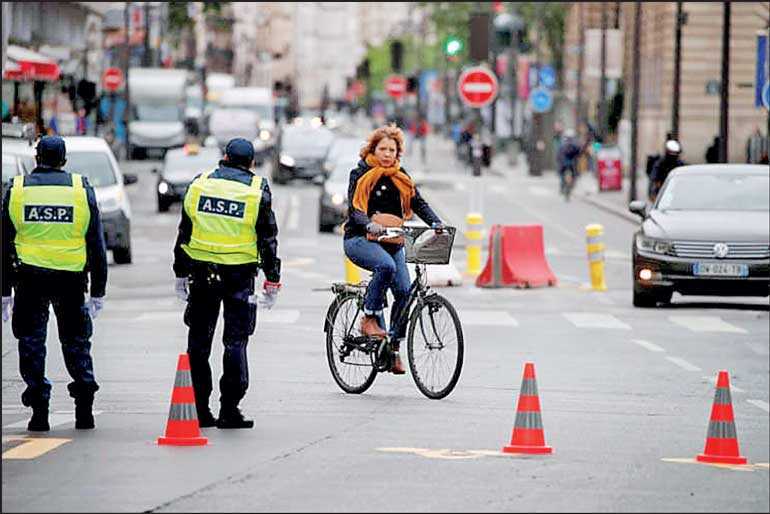Thursday Feb 27, 2025
Thursday Feb 27, 2025
Friday, 7 May 2021 00:00 - - {{hitsCtrl.values.hits}}

Thomson Reuters Foundation: Fears of the novel coronavirus are driving commuters off public transport and back to the car, researchers said yesterday, urging cities to respond quickly to changing habits and lure travellers to green options.
Cities face a pivotal moment as they build back from a pandemic that has reshaped work, life and travel, according to Wednesday’s “Mobility Futures” report, which surveyed 9,500 residents in 13 cities worldwide.
“People feel more protected in their car than in public transport,” said Guillaume Saint of the consumer research organisation Kantar, which carried out the research, adding that a shift to green travel would now be slower than thought.
“We know that public transport is one of the solutions in order to avoid having too much jams, too much traffic, too much noise and pollution, driven by the automotives in the cities, so there is a big challenge here.” The impacts of the pandemic will “fundamentally shape the future of urban mobility” said the report, which polled residents in big cities including New York, Chicago, Beijing, Mumbai and Paris.
Work-from-home policies and remote schooling led to a significant drop in urban journeys – a scenario likely to continue as many institutions embrace hybrid working, it found. City dwellers also spent more time locally and looked to cut their human contact to reduce the spread of infection.
The share of journeys made by bike or on foot rose by 3% on average during the pandemic, the report found, but that shift was far outweighed by a 5.6% drop in the percentage of journeys by public transport and a 3.8% rise in those by car.
Last year’s Mobility Futures report predicted that journeys made by green transport would overtake those by car by 2030.
While Saint said he expects the fall in public transport use to persist, he said cities have a one-off chance to transform.
Authorities can capitalise on a growing enthusiasm for biking and walking, while temporary bike lanes in some cities showed it was possible to nudge residents towards green choices.
They can entice people back to public transport with flexible tariffs for part-time commuters, offering tickets that are valid on multiple types of transport, and making stations more bike-friendly, said Saint. “Mayors need to heed the call of thousands of European urbanites who are crying out for more space for walking, cycling, public transport and greenery,” said Barbara Stoll from European environmental campaign group Transport & Environment.
“Although there is a shift back to driving, this is a crucial window of opportunity for policy makers to embrace the solutions that provide cleaner alternatives to polluting cars.”
Discover Kapruka, the leading online shopping platform in Sri Lanka, where you can conveniently send Gifts and Flowers to your loved ones for any event including Valentine ’s Day. Explore a wide range of popular Shopping Categories on Kapruka, including Toys, Groceries, Electronics, Birthday Cakes, Fruits, Chocolates, Flower Bouquets, Clothing, Watches, Lingerie, Gift Sets and Jewellery. Also if you’re interested in selling with Kapruka, Partner Central by Kapruka is the best solution to start with. Moreover, through Kapruka Global Shop, you can also enjoy the convenience of purchasing products from renowned platforms like Amazon and eBay and have them delivered to Sri Lanka.
Discover Kapruka, the leading online shopping platform in Sri Lanka, where you can conveniently send Gifts and Flowers to your loved ones for any event including Valentine ’s Day. Explore a wide range of popular Shopping Categories on Kapruka, including Toys, Groceries, Electronics, Birthday Cakes, Fruits, Chocolates, Flower Bouquets, Clothing, Watches, Lingerie, Gift Sets and Jewellery. Also if you’re interested in selling with Kapruka, Partner Central by Kapruka is the best solution to start with. Moreover, through Kapruka Global Shop, you can also enjoy the convenience of purchasing products from renowned platforms like Amazon and eBay and have them delivered to Sri Lanka.